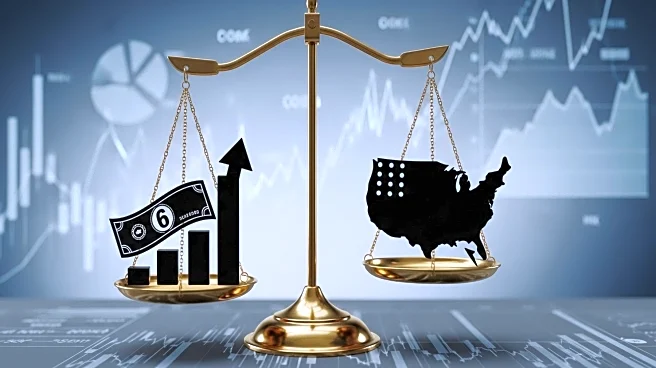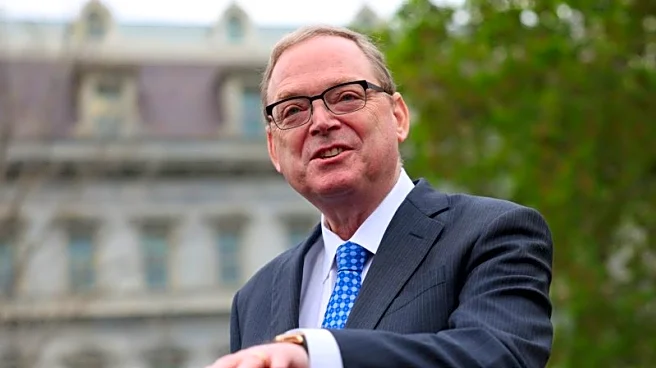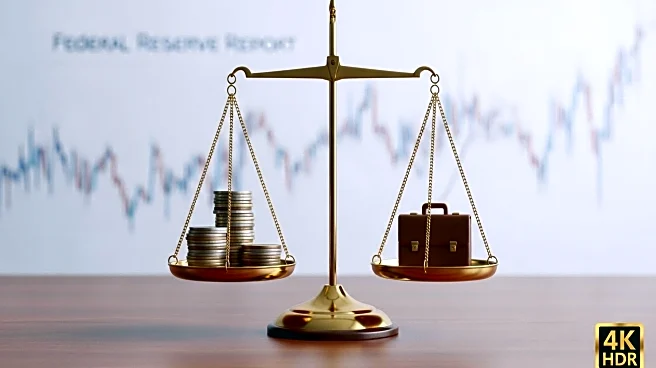What's Happening?
Rising government bond yields have become a focal point in financial markets, raising concerns about debt sustainability globally. Analysts describe this as a 'slow-moving vicious circle,' where higher yields increase borrowing costs for governments, complicating efforts to reduce fiscal deficits. This situation is affecting major economies, including the U.S., where the 30-year Treasury yield has surpassed 5% for the first time since July. The increase in yields is attributed to interest rate hikes and high inflation, which have led to higher mortgage rates in the U.S. The volatility in bond markets is expected to continue, with potential impacts on the wider economy, including stock markets and corporate bonds.
Why It's Important?
The rise in government bond yields has significant implications for the U.S. economy. Higher yields increase the cost of borrowing for the government, which can lead to higher interest rates for consumers, particularly affecting mortgage rates. This can make homeownership more expensive and potentially slow down the housing market. Additionally, the bond market's volatility can impact stock markets, as higher yields make bonds more attractive compared to equities, potentially leading to a shift in investment strategies. The situation also highlights the challenges faced by policymakers in balancing economic growth with fiscal responsibility.
What's Next?
The Federal Reserve is expected to resume rate cuts in response to weaker-than-expected jobs data, which could influence short-term interest rates. However, the long-term bond yields may continue to rise, driven by market concerns over fiscal policies and inflation expectations. This could lead to further increases in mortgage rates and impact consumer spending. The ongoing trade tensions and policy decisions by the White House may also contribute to market volatility. Investors and policymakers will need to closely monitor these developments to mitigate potential economic disruptions.













